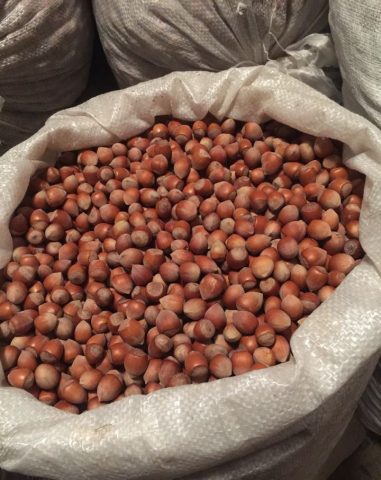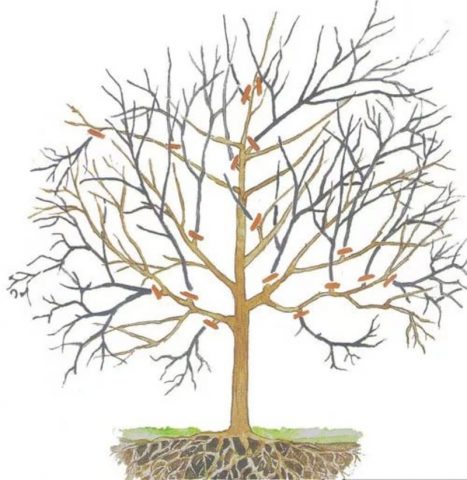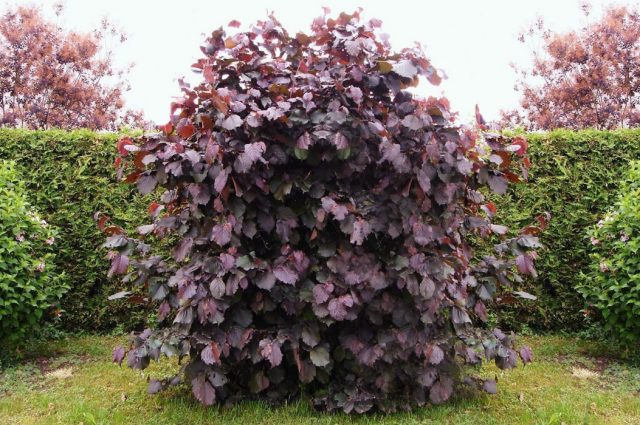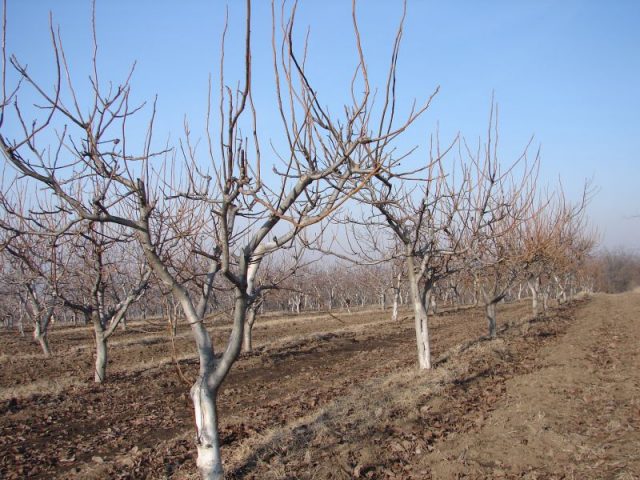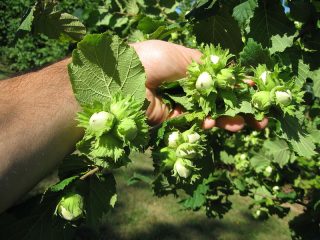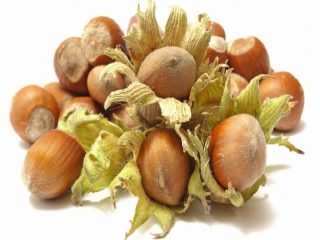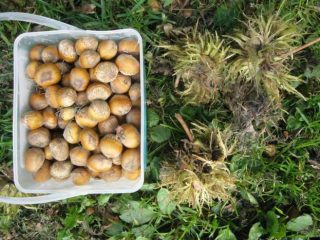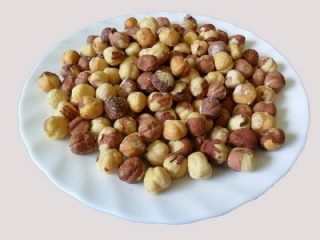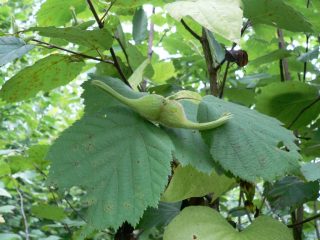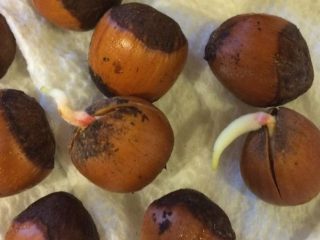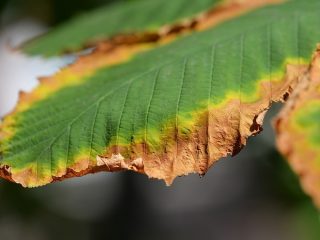Content
Schemes for pruning hazelnuts in the fall will help novice gardeners correctly form a productive plant. Everyone independently chooses what shape to give the seedling, bush or standard. Thanks to regular pruning in the fall, the long-lasting garden form of hazelnut will provide fruit for several decades.
Why do you need autumn pruning of hazelnuts?
Caring for any tree or bush includes regular pruning. Hazelnut bushes, a garden form of hazel, which is pollinated by the wind, are also thinned. A good result will be if the crown is not thickened and the leaves do not interfere with the movement of pollen. Pruning hazelnuts in autumn helps:
- more efficient plant development;
- early entry into fruiting;
- better yield;
- good ripening of wood and fruits;
- increasing the lifespan of the plant;
- improving winter hardiness;
- resistance to fungal diseases and pests.
Pruning, which is carried out in the fall, regulates the timing of the spring growing season of hazelnuts, including the beginning of flowering and the development of branches. The goals that the gardener achieves:
- the formation of a sparse light crown, where sunlight and air flows freely enter;
- stimulating the growth of more short fruiting branches at the tops of all shoots.
Timing for pruning hazel
The optimal time for planting hazelnuts is autumn. At the same time, the first pruning is carried out, proportionally leveling the ratio of the mass of branches and roots. Usually only 20 cm of shoot is left. It is very important to prune hazelnuts in the fall, starting from 5-6 years of development. The nut enters the fruiting period, which, with proper agricultural technology, can last more than 100 years. The hazelnut grows vigorously, and especially a lot of root shoots appear. For decent yield, the crown needs to be lightened annually and the shoots removed.
Start pruning after leaf fall. Pruning hazel in the fall for beginners only at first seems like a complicated process. You need to carefully study the tips and diagrams and begin to form a plant. In spring, pruning is carried out in March, before flowering, and in the south even in February, if there are no severe frosts in the long-term forecast. Dried shoots treated with this special technique in August are pruned into a bud during the flowering phase. They try to leave 3-4 buds with female flowers on the branch.
Hazelnut branches are dried by breaking them off so that they do not grow in length and the wood ripens well. The procedure is carried out with the strongest growing branches. Break off their 3-5 cm tops with your hands and leave them in this form until spring pruning. The most abundant harvest is obtained on such branches.
How to prune hazelnuts in the fall
It is important to carry out the first pruning in the fall when planting or in the spring on an already rooted seedling. If you leave all the branches, in the spring they will bloom leaves, which the weak roots will have to feed to the detriment of their development.In hot spring, active evaporation from leaf blades also occurs, during which the root system dries out. A plant that has undergone pruning begins its growing season a week later. At this time, the root system works almost on itself and takes root easily. The main principle of pruning hazelnut seedlings in the fall is that the fewer thin roots there are, the more shoots need to be trimmed.
In the first years of growth, a fruiting crown of 6-8 strong shoots is formed in young hazelnuts. Weak trunks are cut in the fall at ground level, as low as possible. The tops of the remaining shoots are pruned by a third of the growth in order to stimulate the appearance of overgrowing branches with fruit-bearing buds. The next year, short fruiting branches begin to grow at the tops of the skeletal branches, which must be preserved and removed only for sanitary cleaning. Well-developed side branches are pruned to the middle of their length. Carefully examine the young shoots, noting those shoots where there are female flowers. They are not pruned in the summer, but the weakest ones are removed in the fall after harvesting.
How to trim hazelnuts to fit a bush
In nature, hazel grows in the form of a bush, so hazel trees are more often found with such a harmonious silhouette. The shoots are almost never cut in height; attention is paid to thinning them. The shape of the bush is created immediately after planting. The shoot is pruned low, leaving only 6-7 buds, which is approximately 14-22 cm in height.This procedure stimulates the development of side shoots and the formation of shoots that will become skeletal branches.
In the second or third year of growth, hazelnuts begin to be rationed in the fall, weak shoots and those growing in the center of the bush are removed. By opening the middle for free access to sunlight and air flow, a future successful harvest is laid. Under warm rays, the wood will ripen better and create more fruit branches and buds. This is why hazelnut pruning in the fall is mandatory, as the video for novice gardeners confirms. It is better to leave no more than 9 shoots for fruiting.
All these skeleton-forming branches are also regularly pruned in the fall to create short fruit-bearing shoots. The lateral shoots on the skeletal shoots are cut to 3-4 buds, and the tops of these leading shoots are cut to 1/3 or ½ for strong growth. The cut is always made above the bud, which grows outward. The bush is formed in the form of a bowl or “boat”.
In the fall, the central conductor of the cup-shaped crown is shortened, and the highest shoot from the outer bud is bent using improvised means to free the center of the hazelnut bush. For the second type of crown, the side branches are attached to two trellises, leaving the middle open. The first type of crown is used for single-growing hazelnuts, and the second - if the bushes are planted in a row.
How to trim a hazelnut to fit a tree
This type of pruning of common hazel and hazelnuts is not so popular, but many gardeners practice it for the sake of a spectacular impression. There is an opinion that a hazelnut standard in the same conditions with a bush formation is less productive. At the same time, with proper pruning in industrial cultivation, standard hazel gives a larger yield per 1 square meter.m due to the fact that planting walnut trees on the same area is more compact.
This type of formation has a number of advantages:
- the trunk is easier to care for;
- fruiting accelerates;
- compact fit, which ensures increased collection;
- duration of fruiting and life of the tree.
When forming hazelnuts with a tree in the form of a bowl, the following standards are adhered to:
- tree height up to 2-3 m;
- recommended trunk height – up to 40 cm;
- at 4 years of age there are 6-7 skeletal shoots;
- the number of branches in an adult specimen is up to 10-15 pieces.
For effective branching, summer growth is annually shortened to half. Reduce height if desired. Root shoots and thickening branches are removed in the fall. The cup is formed in the late flowering phase.
Rejuvenating pruning of old hazel
From the age of 20, the hazelnut bush is gradually rejuvenated by cutting out 1-2 branches every year. A new bowl or trellis is created by pruning from root suckers. In the fall, radical rejuvenating pruning is sometimes carried out, removing all shoots, and re-forming a bush from the shoots.
Sanitary pruning of hazelnuts in autumn
Regularly clean the bushes and trunks of large garden hazel and hazel through pruning in the fall to a ring:
- root shoots are cut off at the base;
- remove dry and weak branches, leaving fruitful ones;
- shoots that go inside the crown.
Caring for nuts after trimming
After radical pruning of hazelnuts in the fall, the bush is hilled to a height of up to 7 cm with humus or compost. Mandatory watering and fertilizing, and in hot weather - mulching of the tree trunk circle.
Conclusion
Schemes for pruning hazelnuts in the fall are quite simple and can be done by beginners in gardening. Carefully following the advice, treating the cuts with varnish or oil paint, and further feeding the plant will give undoubted results.
